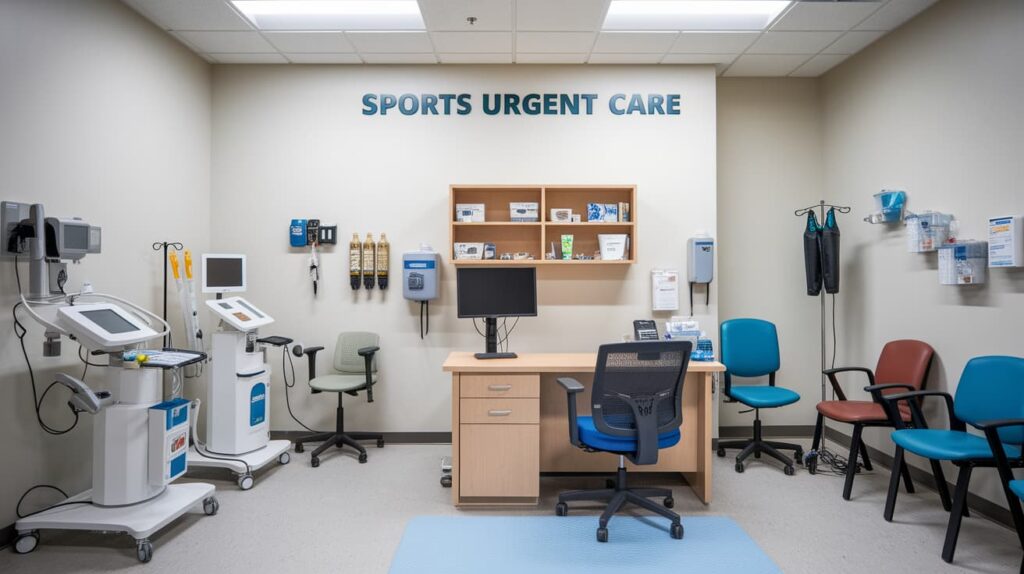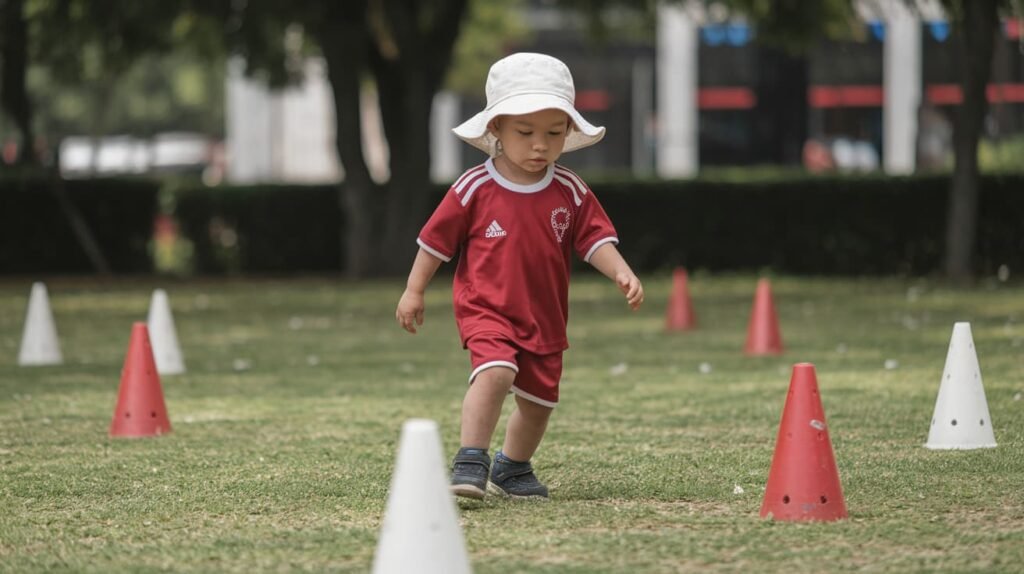Whether you’re an amateur athlete, weekend warrior, or a parent of a young player, sports injuries can happen in the blink of an eye. Twisted ankles, sprains, fractures, or sudden muscle strains don’t always wait for a regular doctor’s appointment.
That’s where sports urgent care steps in—a middle ground between emergency rooms and scheduled physician visits.
Sports urgent care centers specialize in treating injuries that occur during physical activities. They offer a faster, more focused option than a traditional ER, without the long wait times or the need for a referral.
This article explores what sports urgent care actually is, what kind of services it offers, who can benefit from it, and how it differs from other medical care options. If you’re looking for a practical, no-nonsense breakdown of the topic, you’re in the right place.
What Is Sports Urgent Care?

Sports urgent care is a type of walk-in medical service that provides immediate attention to sports-related injuries. It fills the gap between emergency departments and regular physician offices.
While not intended for life-threatening emergencies, these clinics are well-equipped to handle non-life-threatening but pressing athletic injuries.
Here’s why sports urgent care matters:
- Quicker access to treatment: Avoid long waits typically associated with emergency rooms.
- Sports-specific expertise: Staff often includes physicians and physical therapists familiar with athletic injuries.
- On-site imaging and diagnostics: Many centers offer X-rays and MRIs, which speeds up diagnosis.
- Convenient hours: Evening and weekend availability means you don’t have to wait until Monday to get treated.
Sports urgent care centers are often used by athletes, coaches, and parents who need quick assessments and treatment plans. They’re especially useful when time is of the essence—like right after a game or during a tournament weekend.
Common Injuries Treated in Sports Urgent Care
Sports urgent care centers are prepared to deal with a wide range of athletic injuries. While they aren’t equipped for major trauma or surgery, they can handle most injuries that require immediate attention but not emergency care.
Some of the most commonly treated conditions include:
- Sprains and strains: Ankle sprains, pulled hamstrings, and similar issues.
- Fractures and dislocations: Broken fingers, wrists, or collarbones.
- Tendonitis and overuse injuries: Common in runners, swimmers, and tennis players.
- Contusions (bruises): Particularly after contact sports.
- Cuts and lacerations: That may require stitches or wound care.
- Concussions: Mild traumatic brain injuries that require immediate evaluation.
What You Can Expect During a Visit?
- Initial assessment: A physical examination to evaluate the injury.
- Imaging: X-rays or MRIs (if available on-site) to confirm the extent of the injury.
- Treatment: Includes bandaging, splints, wraps, or medications like anti-inflammatories.
- Follow-up instructions: Guidance on rest, rehab, and whether a specialist visit is necessary.
In most cases, athletes walk out with a clear diagnosis, a game plan for recovery, and peace of mind.
Who Should Use Sports Urgent Care and When?
Sports urgent care is a lifeline for anyone with an active lifestyle, not just pro athletes. From weekend hikers to gym enthusiasts, injuries can strike anywhere—on the trail, in the yard, or during a pickup game. Here’s a quick guide on who should seek sports urgent care and when it’s the right call:
When to Visit Sports Urgent Care?
- Pain or limited movement from an injury that isn’t life-threatening.
- Need for quick imaging to check for fractures.
- Uncertainty about whether a specialist is needed and seeking expert advice.
- Injuries happening during evenings or weekends when other clinics are closed.
- Desire for faster service compared to a crowded emergency room.
Who Benefits from Sports Urgent Care?
- Athletes: Fast care minimizes downtime and speeds up recovery.
- Parents: Quick diagnoses for kids’ falls or sports injuries reduce worry.
- Coaches: Clear injury reports aid in safe return-to-play decisions.
- Active Adults: Fitness-related injuries get treated before escalating.
Sports urgent care also offers practical perks, like providing documentation for school, work, or team medical records—perfect for organized sports. Next time an injury hits, consider sports urgent care for swift, specialized attention.
What to Avoid When Visiting Sports Urgent Care?

Sports urgent care clinics are a lifeline for athletes, offering quick, specialized treatment for injuries. But to get the most out of your visit, steer clear of these common pitfalls.
- Skipping the ER for Serious Emergencies: Severe bleeding, chest pain, or unconsciousness? Head straight to the emergency room, not urgent care.
- Expecting Long-Term Treatment: These clinics focus on initial care, not ongoing rehab or chronic injury management.
- Waiting Too Long: Delaying treatment squanders the advantage of fast care. Get checked promptly to speed up recovery.
- Ignoring Follow-Up Advice: Skipping rest, icing, or specialist visits can stall healing. Follow the plan.
- Bringing Non-Sports Issues: General illnesses or unrelated medical concerns are better handled by primary care, not sports clinics.
Tips for a Smoother Visit
- Bring sports gear tied to the injury, like cleats or helmets.
- Share the injury’s timeline: when, how, and symptoms since.
- For kids, have medical history and insurance info ready.
- Stay open to specialist referrals or follow-up steps.
Dodging these mistakes ensures your sports urgent care visit is smooth and sets you up for a faster recovery.
Conclusion
Sports urgent care has become a practical solution for handling injuries that fall in the gray area between “wait and see” and “go to the ER.” With quicker access to sports-focused care, it fills a vital role in helping people stay active and recover safely.
Whether it’s a tweaked knee during a pickup basketball game or a wrist injury from a weekend hike, knowing where to go—and when—can make a big difference.
Sports urgent care offers the kind of timely, knowledgeable support that active individuals need to stay on track without missing too much of the action.
It’s not a replacement for emergency care or long-term treatment, but in the right situation, it’s the right call. With the right expectations and a clear understanding of what it offers, sports urgent care can be a game-changer in how injuries are managed and healed.



